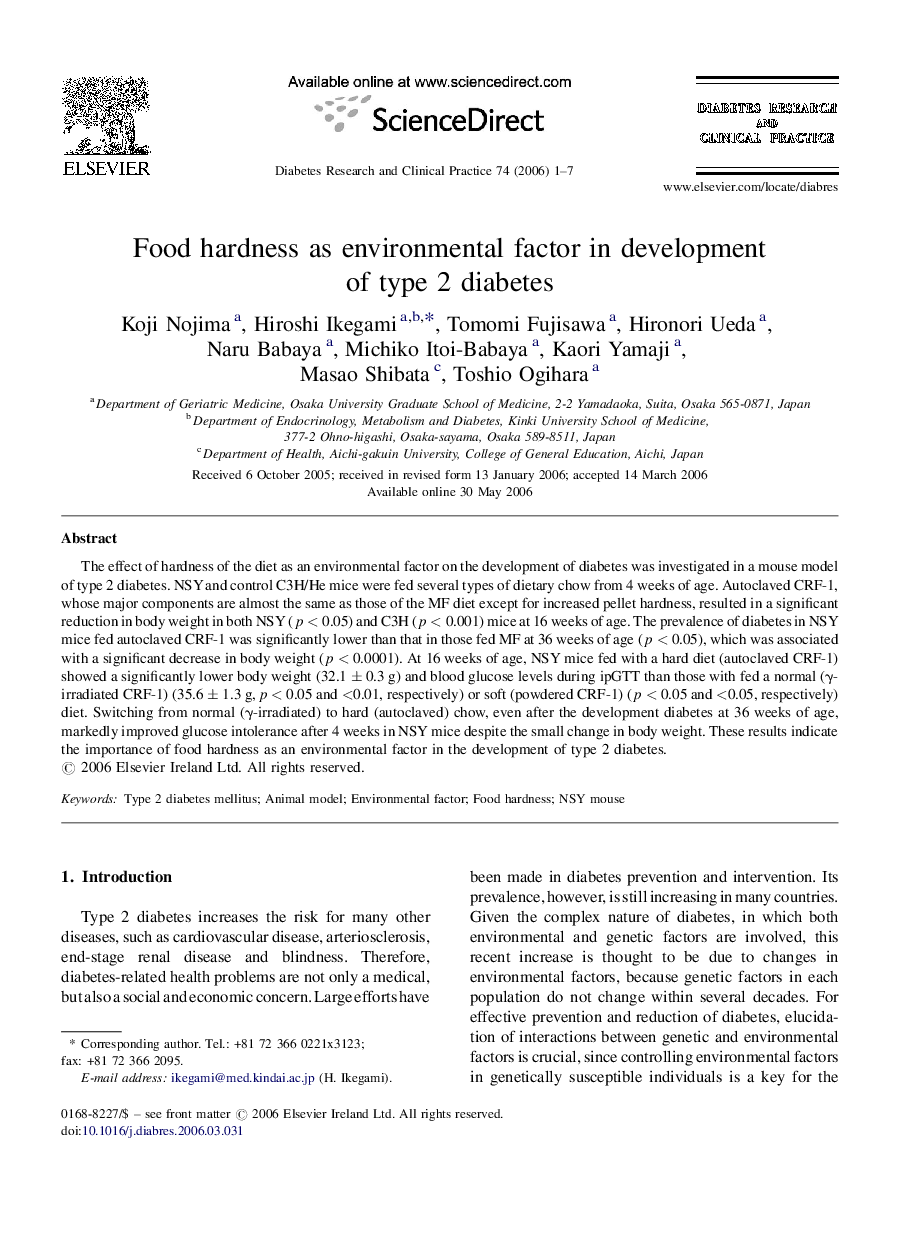| Article ID | Journal | Published Year | Pages | File Type |
|---|---|---|---|---|
| 2799215 | Diabetes Research and Clinical Practice | 2006 | 7 Pages |
The effect of hardness of the diet as an environmental factor on the development of diabetes was investigated in a mouse model of type 2 diabetes. NSY and control C3H/He mice were fed several types of dietary chow from 4 weeks of age. Autoclaved CRF-1, whose major components are almost the same as those of the MF diet except for increased pellet hardness, resulted in a significant reduction in body weight in both NSY (p < 0.05) and C3H (p < 0.001) mice at 16 weeks of age. The prevalence of diabetes in NSY mice fed autoclaved CRF-1 was significantly lower than that in those fed MF at 36 weeks of age (p < 0.05), which was associated with a significant decrease in body weight (p < 0.0001). At 16 weeks of age, NSY mice fed with a hard diet (autoclaved CRF-1) showed a significantly lower body weight (32.1 ± 0.3 g) and blood glucose levels during ipGTT than those with fed a normal (γ-irradiated CRF-1) (35.6 ± 1.3 g, p < 0.05 and <0.01, respectively) or soft (powdered CRF-1) (p < 0.05 and <0.05, respectively) diet. Switching from normal (γ-irradiated) to hard (autoclaved) chow, even after the development diabetes at 36 weeks of age, markedly improved glucose intolerance after 4 weeks in NSY mice despite the small change in body weight. These results indicate the importance of food hardness as an environmental factor in the development of type 2 diabetes.
